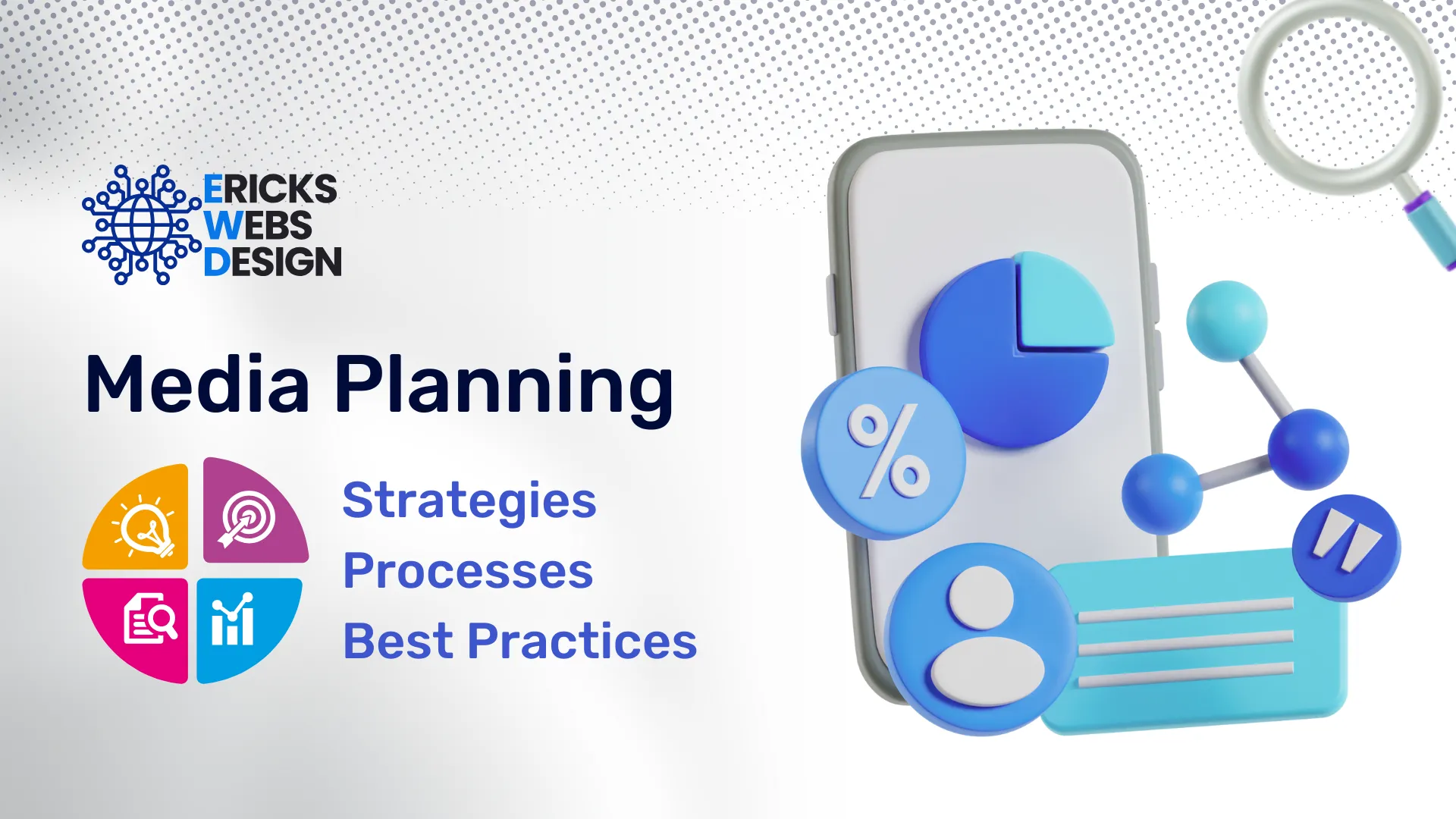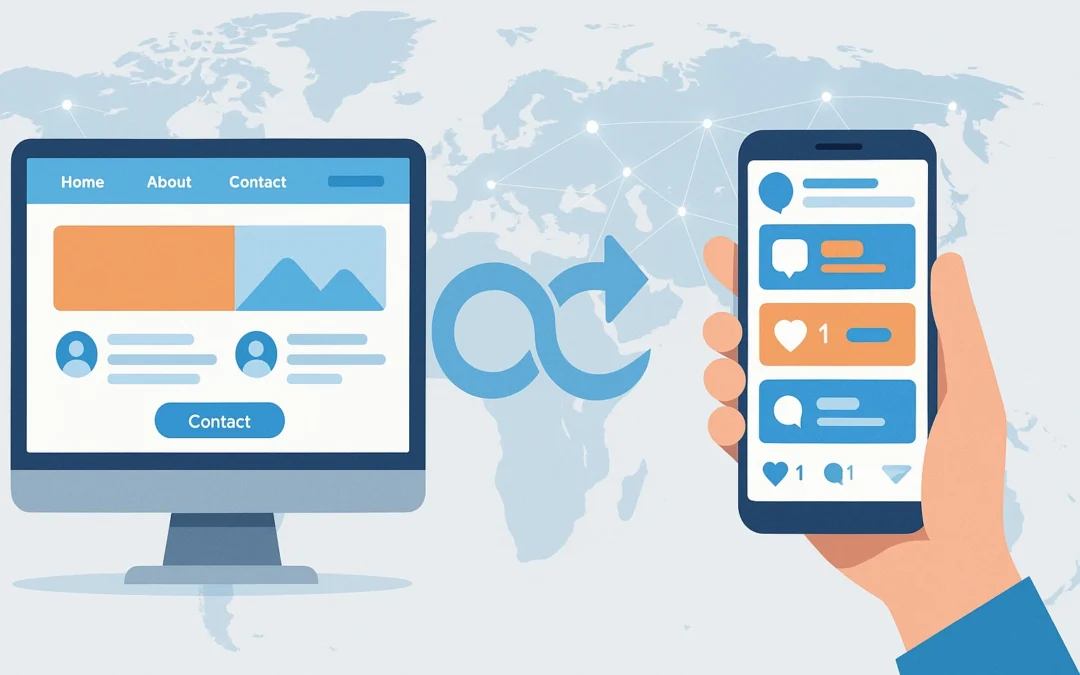Media Planning: Strategies, Processes, and Best Practices
Media planning plays an integral role in the success of advertising campaigns by helping brands communicate effectively with their target audience. It combines strategic thinking with analytical precision to maximize reach and ensure that marketing messages are conveyed at the right time, on the right platform, and to the right people.
Introduction to Media Planning
Media planning involves a detailed process of selecting the most appropriate media channels to convey a brand’s message. It considers factors like audience behavior, media consumption patterns, budget constraints, and campaign goals. A well-constructed media plan acts as a roadmap for achieving desired advertising outcomes.
Importance of Media Planning
In the competitive advertising landscape, media planning provides a strategic edge. It not only streamlines the advertising process but also ensures a cohesive message delivery, making it easier for brands to engage their audience and improve conversion rates.
What Is Media Planning?
Media planning is the process of determining how to best allocate marketing budgets across various media channels to achieve campaign objectives. It involves a balance of creativity and analytics, requiring media planners to understand market dynamics, consumer behavior, and the unique strengths of each media channel.
Why Media Planning Is Crucial for Successful Campaigns
Effective media planning helps businesses establish clear marketing objectives, understand the audience’s media preferences, and allocate budgets efficiently. It creates a robust framework that aligns advertising efforts with broader marketing strategies.
Role of Media Planning in Advertising
Media planning ensures that marketing campaigns deliver the right message at the right time, improving the overall impact and recall of the ad. This strategic approach boosts the effectiveness of advertising efforts, contributing significantly to brand awareness, lead generation, and conversion.
How It Helps in Achieving Marketing Goals
Media planning bridges the gap between marketing goals and actual campaign outcomes. By carefully selecting media channels, timing, and creative formats, brands can increase engagement, enhance visibility, and drive the desired actions from their audience.
The Detailed Media Planning Process
A successful media plan is crafted through a comprehensive, step-by-step process that requires thorough analysis and strategic thinking.
Defining Media Objectives
The starting point of media planning is setting clear, measurable objectives that align with overall marketing strategies. These goals could range from increasing brand awareness and driving website traffic to boosting sales or improving customer retention.
Analyzing Target Audience
A deep understanding of the target audience is crucial for effective media planning. Analyzing the audience involves examining demographic factors (age, gender, income), psychographic elements (interests, values), geographic location, and behavioral data (online habits, media preferences). This analysis allows marketers to tailor messages and choose the right channels.
Budget Allocation
Media planners need to determine how much of the marketing budget will be allocated to various channels. This involves calculating the cost-per-impression (CPI), cost-per-click (CPC), and other metrics that help estimate the effectiveness of media investments. Budget allocation should be flexible to allow adjustments based on real-time campaign performance.
Choosing Media Channels
Selecting the right mix of media channels is crucial for achieving campaign goals. Media planners must evaluate channels based on:
- Reach and Frequency: Ensuring that the campaign reaches the desired audience frequently enough to drive action.
- Relevance: Choosing channels that are relevant to the audience’s interests and behaviors.
- Cost-effectiveness: Balancing cost with the potential for returns.
Implementing Media Plans
Implementation is where media strategies come to life. It involves setting up campaigns across the chosen platforms, ensuring consistency in messaging, ad formats, and branding. Media planners must monitor ad placements, negotiate costs, and ensure compliance with platform-specific guidelines.
Evaluating Media Performance
Evaluation is a continuous process. It includes tracking key metrics such as impressions, click-through rates (CTR), conversion rates, and return on ad spend (ROAS). Media planners should use data analytics to identify underperforming areas and make adjustments in real-time.
Key Components of Effective Media Planning
To create successful campaigns, media planning must incorporate several key components that drive performance and ROI.
Media Mix Strategy
A well-rounded media mix strategy utilizes a combination of channels like TV, radio, print, social media, PPC, and email marketing. It aims to provide consistent messaging across channels while maximizing reach and engagement.
Frequency and Reach
Maintaining the right balance between frequency (how often an ad is seen) and reach (how many people see it) is crucial. Overexposure can lead to ad fatigue, while underexposure may not generate enough awareness.
Ad Placement Timing
Timing is everything in media planning. Understanding when the audience is most active and likely to engage is essential for improving performance. For instance, launching campaigns during seasonal sales events or aligning with popular cultural events can boost engagement.
Cost-Effectiveness
A cost-effective media plan ensures the best return on investment. Media planners should continuously monitor ad spend and optimize placements based on performance metrics.
Media Planning vs. Media Buying
Media planning and media buying often work hand-in-hand, but they have distinct roles in the advertising ecosystem.
Differences Between Media Planning and Media Buying
- Media Planning: Involves the strategic process of selecting the right channels and strategies to achieve marketing goals.
- Media Buying: Focuses on purchasing ad space across chosen platforms, negotiating costs, and managing contracts.
How They Complement Each Other
While media planning outlines the strategic roadmap, media buying executes the plan by securing ad placements. Effective collaboration between planners and buyers ensures smooth campaign execution.
Developing a Media Strategy
Crafting a media strategy involves several stages:
Setting SMART Goals
The first step is to establish SMART (Specific, Measurable, Achievable, Relevant, Time-bound) goals for the campaign. This approach helps to ensure clear direction and measurable outcomes.
Identifying Core Audience
Identify the core audience for the campaign based on demographics, behavior, and interests. This identification helps in creating personalized and targeted messaging.
Researching Media Channels
Analyzing different media channels is critical to finding the best fit for campaign goals. Channels should align with where the target audience spends the most time.
Determining Campaign Timing
Decide when the campaign should run to maximize impact. Timing could depend on factors like product launches, seasonal trends, or special events.
Role of Analytics in Media Planning
Analytics play a pivotal role in measuring the effectiveness of media plans.
Tracking Media Performance
Tools like Google Analytics, Facebook Insights, and programmatic platforms help track the performance of media campaigns, providing data on reach, engagement, and conversion rates.
Using Data to Improve Campaigns
By analyzing data, marketers can identify which channels, messages, and timings perform best. This data-driven approach allows for continuous campaign optimization, ensuring better results over time.
Top Media Planning Tools and Software
Media planners rely on various tools to streamline the planning process. Here are some popular ones:
- Google Ads Manager: For managing digital ad campaigns across search and display networks.
- Facebook Business Manager: For managing social media ad campaigns, tracking performance, and optimizing budgets.
- Comscore: For measuring TV and digital media consumption, helping planners make informed decisions about media allocation.
- HubSpot: For tracking digital campaign performance, especially in inbound marketing efforts.
- Nielsen: For TV, radio, and cross-platform measurement, offering insights into media consumption habits.
Challenges in Media Planning
Media planning comes with its own set of challenges:
Budget Constraints
Limited budgets often require planners to make tough decisions about which channels to prioritize.
Shifting Audience Preferences
Audience preferences change rapidly, especially with evolving digital trends. Planners need to stay updated to ensure campaigns remain relevant.
Ad Saturation
High ad frequency can lead to ad fatigue, decreasing engagement rates. Planners must find ways to keep the audience interested without overwhelming them.
Digital Media Planning
Digital media planning is an essential part of modern campaigns, focusing on online channels like social media, search engines, and websites.
Importance of Digital Media in Modern Campaigns
Digital media offers unparalleled reach and engagement, making it a must-have for any advertising strategy.
Key Digital Channels
Key digital channels include search engine marketing (SEM), social media advertising, display advertising, and email marketing. Each channel has its own strengths, and the right mix depends on campaign goals and audience behavior.
Integrated Media Planning
Integrated media planning ensures that campaigns deliver consistent messaging across both digital and traditional channels.
How to Combine Traditional and Digital Channels
Planners should find ways to integrate digital efforts with traditional campaigns, such as using TV ads to drive website traffic or using radio ads to promote social media contests.
Creating a Cohesive Campaign Strategy
A cohesive strategy ensures that all media channels work together to amplify the message, leading to stronger brand recall and engagement.
Conclusion
Media planning is more than just choosing where to place ads; it’s about strategic alignment with marketing objectives, effective resource allocation, and continuous optimization. By leveraging data, creativity, and a clear understanding of the audience, brands can build impactful campaigns that resonate and drive results.










